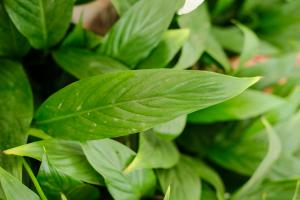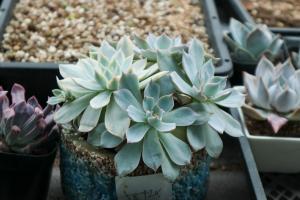How Often Should You Water Newly Planted Bare Root Roses?
When it comes to planting a bare root rose, watering is one of the most important factors to consider. Roses need water to thrive, and when they are first planted, they require extra care to establish their roots and become fully rooted in the soil. The question is, how often should you water your newly planted bare root rose to promote its growth?
The First Watering
The first watering of a newly planted bare root rose is critical to its survival. After planting, the soil around the roots should be thoroughly moistened, but not water-logged. It is recommended to water the rose thoroughly at planting time and repeat the watering every 2-3 days until the rose establishes a good root system. The goal is to keep the soil consistently moist but not too wet, which can lead to root rot.
Adjusting To Your Climate
The frequency of watering your newly planted bare root rose will depend on the climate and growing conditions in your area. In hot and dry weather, you may need to water every day or every other day, whereas in cooler and wetter climates, you may be able to water less frequently. It is important to monitor the soil moisture level by sticking your finger about an inch into the soil around the rose each day. If the soil feels dry, it's time to water. If the soil is still moist, wait a day or two and check again.
Watering Techniques
When watering your newly planted bare root rose, it's essential to water deeply so that the water reaches the deep roots. Avoid shallow watering, which only wets the top few inches of soil and encourages shallow roots. Use a slow, steady stream of water to penetrate deeply into the soil, and make sure to water the entire root zone. If possible, use a soaker hose or drip irrigation system to water at the base of the rose, which delivers water directly to the roots and minimizes evaporation.
Factors That Affect Watering Needs
Several factors can affect the watering needs of your newly planted bare root rose. These include the size of the rose, the amount of sunlight it receives, the type of soil it is planted in, and the surrounding plants and trees. A larger rose will require more water than a smaller one, and roses planted in sandy soil will need more frequent watering than those in loamy soil. Also, roses planted near trees or other plants might need more watering because the surrounding foliage competes for water and nutrients.
Conclusion
Proper watering is critical to the success of your newly planted bare root rose. While the frequency of watering will depend on several factors, the general rule is to keep the soil consistently moist but not soggy. By following these watering tips and adjusting to your climatic conditions, you can ensure that your rose establishes a strong root system, grows vigorously, and produces beautiful blooms for years to come.

 how many times do yo...
how many times do yo... how many planted tre...
how many planted tre... how many pine trees ...
how many pine trees ... how many pecan trees...
how many pecan trees... how many plants comp...
how many plants comp... how many plants can ...
how many plants can ... how many plants and ...
how many plants and ... how many pepper plan...
how many pepper plan...































